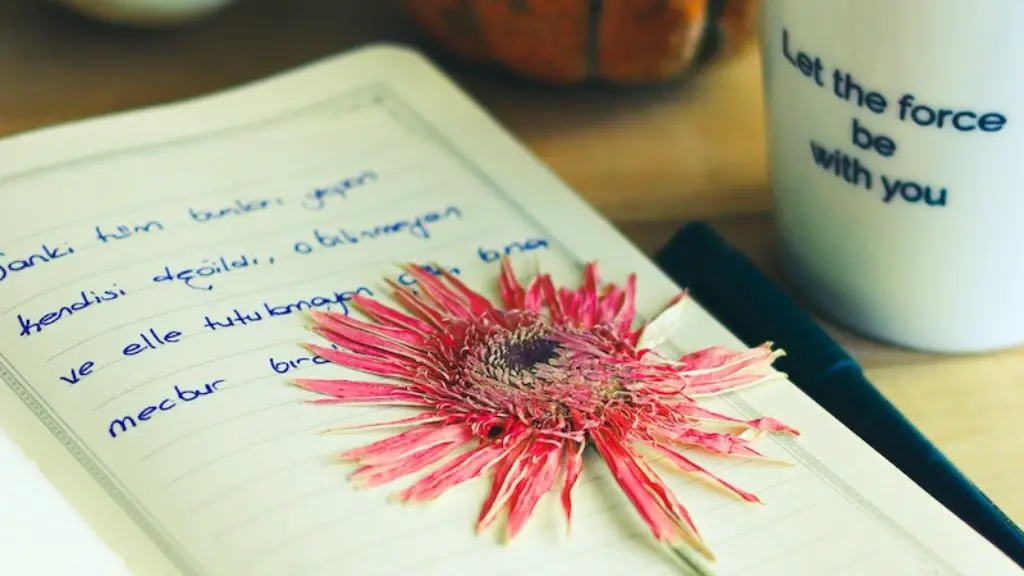Understanding Haiku Poetry
Haiku poetry is an ancient form of Japanese poetic writing that is still practiced today. It has been passed down from generation to generation and has been used in many cultures across centuries. Traditionally, haiku poems consist of three lines and seventeen syllables, usually in a 5-7-5 pattern. The poem is used to capture a moment in time and create a vivid image in the mind of the reader. Most haiku poems are centered around nature and its beauty, resilience, and perfection.
Haiku poems can also be seen as a testament to human limitations. Many haikus express the feeling of being small or insignificant in the face of the natural world. They show the inability of the human race to fully grasp the beauty and complexity of nature. By writing haikus, people can ignite the beauty they see in the world around them and feel close to it.
Finding Inspiration
One of the greatest challenges when teaching haiku poetry is helping students find inspiration when starting to write. When getting started with writing, students should look for inspiration in their surroundings. They can also look to the traditional works of well-known haiku poets for inspiration. Jazz up conversations with nature, listen to the sound of songbirds, and catch the birdsong to inspire their writing.
Another way that students can find inspiration is to write about their feelings and experiences. It can help them to become more aware of the present moment and appreciate each passing moment. Writing in this way helps them to pause and appreciate the small moments in life.
Using Imagery
The use of imagery is a crucial element in haiku poetry. To help students understand the importance of imagery and how to use it, teachers can provide visual images to stimulate their imagination. These images should relate to the concept or feeling that the student is attempting to capture in their poem. Using various images can help to bring a scene to life in the reader’s mind and have a greater impact on the poem.
Teachers can also suggest that students take photographs of the natural world, such as animals, plants, or nature scenes. By exploring the details of these photographs, students can gain imaginitive inspiration for creating their haiku poems. It is also important for students to spend time simply observing their surroundings and appreciating the beauty in nature. Doing this regularly helps to evoke the feelings that can be captured in the haiku poem.
Structuring Haiku Poems
Once students understand the concepts and ideas behind writing haiku poems, it is important for them to establish the structure. Teachers can explain the traditional structure of haiku poems, which consists of three lines and seventeen syllables. This structure gives the poet a framework to work within and forces them to be concise and focused when crafting their work.
In addition to the structure, it is also important to teach students how to create a poetic flow. This can be done by having the students read aloud, noting the specific moments of emphasis or pause. By breaking up a poem into manageable pieces of three lines, the poet can better direct their focus and create the desired flow.
Finding a Voice
Once students understand the structure and basics of crafting a haiku poem, teachers can help them find their own voice. Before writing, it is important for them to reflect on the type of image or feeling that they are hoping to convey. It is also important for the students to familiarize themselves with the traditional works of haiku poets, as these works can inspire and guide them when creating their own poems.
Once they have established what they are hoping to capture in writing, teachers can provide exercises that help students connect and understand the feeling they are trying to convey. By asking them to reflect on their experience and connect it to their environment, it helps to deepen their understanding and embed a lasting memory.
Creating Personal Connections
When teaching haiku poetry, it is important for students to understand the personal connections that can be created by writing. One of the greatest gifts that haiku poetry offers is the ability to appreciate the moment and find authenticity. Writing can be a form of reflection, allowing the writer to explore who they are and how they feel.
This personal connection also helps students to connect with the natural environment in a more meaningful way. It is often in these moments that the beauty of nature can be further explored and discovered. This has immense value for students, as it encourages them to explore their environment and be curious about what lies within it.
Finding Clarity Through Revision
Revision is an important part of the haiku poetry writing process and should be taught in writing classes. With haiku poetry’s unique structure and brevity, even a small change can have a powerful effect. It is important for students to learn to revise and edit their work to ensure that their haiku poems flow in a meaningful way and convey the right message.
This is also a great way to teach students the importance of clarity in writing. As they revise their writing, they will learn to be more concise, sharpening their poetic voice and honing in on the feelings they aim to capture in their poem.
Teaching Mathematics Through Haiku Poetry
Haiku poetry can also be used to teach students mathematics. This approach encourages students to become more creative in their thinking and encourages them to think outside the box. By challenging them to use the structure of a haiku poem, students can learn to solve complex mathematical problems in new ways.
For instance, teachers can guide students through how to use the syllable structure of a haiku poem to calculate numerical values. By showing them how different syllable patterns reflect a number of items, this helps to make mathematical concepts like addition, subtraction, and multiplication more accessible.
Exploring Haiku Poetry Digitally
Technology can be an invaluable resource when teaching haiku poetry. Digital resources are a great way to engage students and broaden their understanding of haiku poetry. There are various online tools that allow students to write and share their haiku poems with others. This helps them to get feedback on their work and start conversations with people from around the world.
Additionally, there are interactive activities that can help students to learn the basics of haiku poetry. These activities are often designed with the language learner in mind and can be used to help students grasp the fundamentals of haiku poetry more quickly. Through these sorts of activities, students can appreciate the creative potential of the genre and practice their writing skills in a meaningful way.
Wrap Up
Haiku poetry is a great form of artistic expression that students can use to create vivid images and tap into the beauty of the natural world. Teaching students about haiku poetry is a great way for teachers to engage with their students and help them become more connected to themselves and their environment. By connecting to their surroundings, students can learn to appreciate each moment and the power of words.


